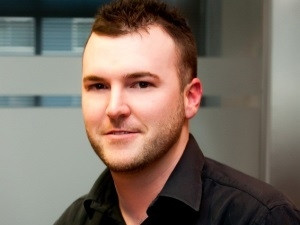
Nicholas Evans, Lead User Experience Consultant at EOH MC Solutions, says UX is one of the hottest buzzwords in the market today, but the field is widely misunderstood - even by many of those offering user experience consulting and design services.
"People are constructing user experience solutions but they are often not engaging with users in the process. Research and validation should make up approximately 60% of the total user experience development process and design should be only 40% or less. Anyone bypassing research and validation is in effect just doing faux UX (uninformed design). They are producing pretty pictures without context or understanding, not designing user experiences," he says.
Evans says EOH MC Solutions has a strong user experience consulting and development arm, working with a number of top corporates. "Our process is based on user experience best practice (ISO 9241) in combination with our extensive experience in this field. It encompasses a great deal more than merely designing a user interface."
He explains that the first step in designing an effective user experience solution is to ascertain exactly what the business hopes to achieve, and who its target market is. "Then we need to validate any assumptions through a process of careful research and engagement, including identifying market trends and what users want and need."
He notes that making unconfirmed assumptions about what users want and will enjoy can be a risky and expensive exercise. "The only way to be sure a design is fit for purpose is to research, validate and iterate," he says.
Simply asking users what they would like in terms of user experience is ineffective, he notes. "People don't always know what they want but they always know when something is wrong. This is where the value of usability testing shines brightly. Asking users to perform real world activities while explaining their thought process and observing the challenges they experience is an incredibly powerful tool for identifying potential design pitfalls. The only way to meet users' expectations and give them an experience that delights is to understand their needs, abilities and limitations while working ahead of the trend curve."
Noting that one size can never fit all in the customer experience stakes, Evans says even tailoring user experience in line with what worked well for similar users or organisations can potentially be a mistake. "You cannot skip the research component," he stresses. "For example, we designed a user centred system for a micro loan company that had a low sales conversion rate. By focusing on ease of use, education and trust, the new system took sales conversion rates from 3% to the high 50% range. When another micro lender approached us to design a similar solution, they assumed their target customer base would want exactly the same experience. Our research and validation proved that was not the case. Surprisingly, there were subtle differences between two very similar target markets, which necessitated a significantly different approach.
"We use this case as a cautionary tale for customers who don't want to embark on research and validation," he says. The devil and delighters are always in the details.
Another key factor in successful user experience design is ongoing innovation in line with changing market demands. "Fashions change, technology changes, and user expectations evolve. This is not a hit-and-run scenario where you can design once and walk away. It's an ongoing process that should be revisited every six to 12 months," he says. "Consider - if you built a user interface just three years ago, it would probably have been designed with traditional PCs in mind. But now, most customers may be accessing it using tablets or smartphones, and may require a different interface or functionality. As user expectations and technologies change, there is a good chance the user experience will no longer meet their needs. You have to continually iterate to keep ahead of trends and expectations in order for your user experience to continue delighting."
Share
EOH MC Solutions
EOH MC Solutions (EOH MC) was founded in 2004 and is a wholly owned subsidiary of EOH Mthombo, a company in the JSE listed EOH Group. Specialising in IT solutions across the Microsoft technology platform, EOH MC is the largest Microsoft development partner in the Western Cape, successfully delivering significant projects to a broad spectrum of businesses across diverse industry sectors. EOH MC's brand represents uncompromising quality, a commitment to excellence and an innovative approach to delivering real business solutions.
EOH MC Solutions
Nicholas Evans
Lead User Experience Consultant
(021) 425 3430
nicholase@eohmc.co.za
Editorial contacts